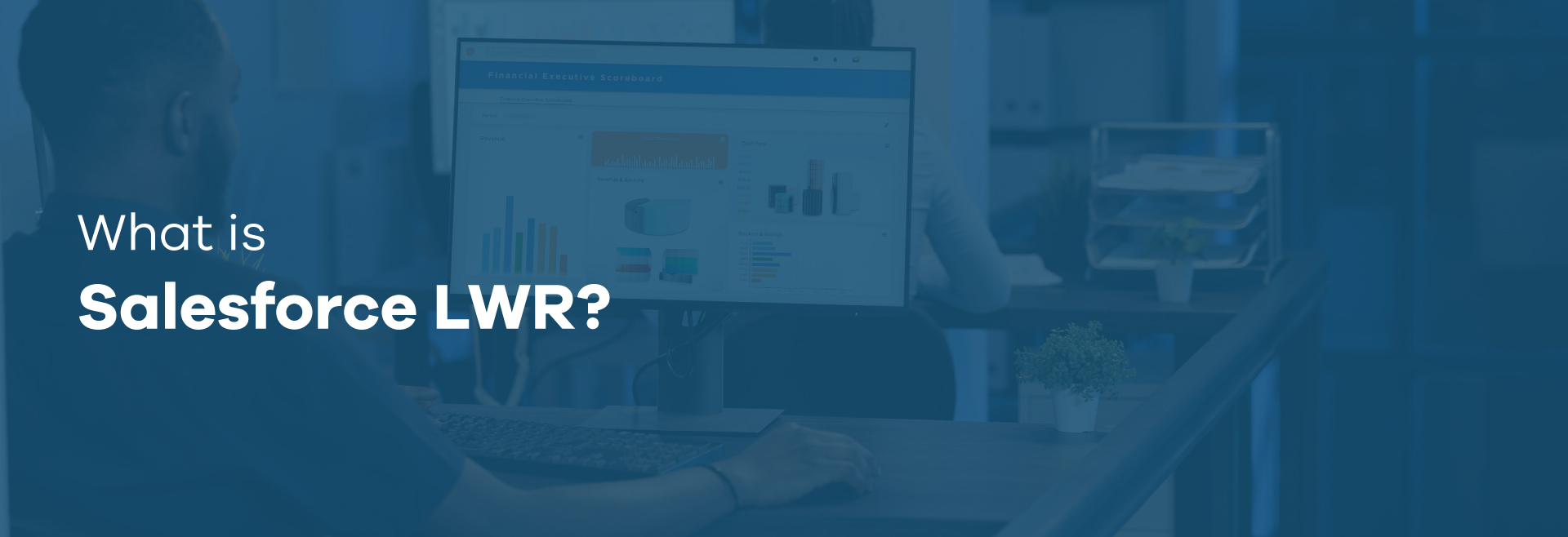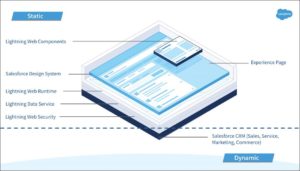
What is Salesforce LWR?
With Salesforce LWR, you can build modern web apps that offer great digital experiences
without compromising performance, security, or scalability.
Vibrant digital communities, self-service knowledge bases, engaging web portals with vital data and KPIs. These are just some of the broad applications of the new Salesforce Lightning Web Runtime (LWR). The long-awaited improvement on Experience Cloud is finally here and it features significant performance improvements, especially for large-scale applications, while maintaining high security standards and intuitive interface. This is what it means and why it could be a gamechanger. Let’s do it:
- What is Salesforce LWR?
- Salesforce LWR: the advantages
- Salesforce LWR: use cases
- How to: step-by-step
- Looking to create a rich, interactive application with Salesforce LWR?
What is Salesforce LWR?
Essentially, the Salesforce Lightning Web Runtime (LWR) is a frontend-development tool by Salesforce. It can be used by citizen-developers and software developers to create web applications using 100% Lightning Web Components (LWC), making it high-performance, easy to use, and lightweight.

Source: Salesforce
Salesforce LWR: the advantages
Salesforce LWR was developed to be the standard platform for frontend in the Experience Cloud, effectively replacing Aura. The advantages of LWR are:
- Speed: it is based on Lightning Web Components, meaning performance is optimized for mobile and browser apps, even for large datasets. You can effectively build a LWR site in a couple of hours.
- Scalability: LWR sites use caching to improve the performance, making them extremely responsive to high volumes, and effective in scaling accordingly.
- Security: LWR sites use Lightning Web Security (LWS), the brand-new security architecture for LWC. That means user data is protected.
- Design flexibility: thanks to the LWC, there is much more flexibility in design, seeing as you can use the available templates or create your own from scratch.
- Control: it offers full control and greater developer experience, being perfect for open-ended cases.
However, Salesforce LWR has some limitations. The current version is still missing some out-of-the-box themes and theme management, multilingual sites, and progressive rendering. Nevertheless, these probably won’t be limitations for much longer, as it grows, and the platform expands.
Salesforce LWR: use cases
Salesforce allows you to set up and customize responsive web portals to suit your needs and company branding. For instance, say you are building a Customer Account Portal. This is where members can log in, access, and manage their accounts, create and manage cases or claims. This type of self-service knowledge base can be useful to let customers find the answers to their questions quickly and efficiently, without having to contact your organization. Such portal improves customer relationships and decreases service costs – and can be accomplished using one of Salesforce LWR out-of-the-box templates, ensuring speed and safety. Or you can build your own custom digital space to align with your specific requirements.
Partner portals are another common use case for Salesforce LWR. This means you can build an efficient, engaging hub where partners can connect with each other, and your company, to work on driving channel sales. It’s the place to share CRM data and information with your partners, collaborate on prospects and deals, manage leads, opportunities, and accounts in real time, forecast channel sales, track performance, streamline channel marketing, partner education and onboarding. This type of portal can also be created using one of LWR templates or customized to suit your needs.
But the true scope of Salesforce LWR is practically endless. You can use it to build almost anything, from an employee onboarding portal to a website where staff can track training sessions, or even a brand-new home for your vibrant customer community, where members can talk to one another and engage in meaningful discussions. It all depends on your organization’s ambition. And it could not be easier to get started.
How to: step-by-step
Creating a LWR site is pretty straightforward in Salesforce LWR:
- From Setup, type Digital Experiences in the Quick Find box. Select All Sites and click New.
- Next, select Build Your Own (LWR) or Microsite (LWR), and click Get Started.
- Enter a name and base URL value.
- Choose an authentication process: Unauthenticated for a public site accessible to anyone on the web or Authenticated for a site that requires login credentials.
- Press Create.
Now you’ve created your very first Salesforce LWR site, and the Experience Workspaces area becomes visible. This Experience Workspaces is where you will build, set up, and monitor your Experience Cloud site.
Looking to create a rich, interactive application with Salesforce LWR?
Near Partner is the partner you are looking for. We can help you create an application with Salesforce LWS, while also building a blazing fast CRM-friendly experience for your customers. Be it high-speed marketing websites, microsites, or extremely low page-load runtime portals, our Salesforce experts at Near Partner can turn your vision into a reality.
Worried about the current limitations? No need. At Near Partner, we can team up with your own team and help them and your business overcome the limitations of the platform, providing custom-built solutions, or even leveraging the existing Aura components and converting them into LWC. What about adding Salesforce CMS content to the Experience Builder sites? We can coach your team on how to do it using custom LWC.
Have a talk with Near Partner’s Salesforce LWR experts and let us find solutions that meet your business’ needs. Get in touch with Near Partner and get your project up and running.



